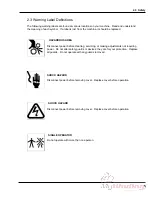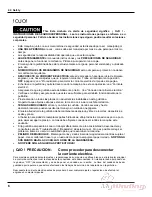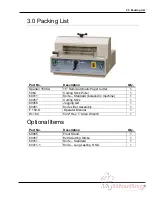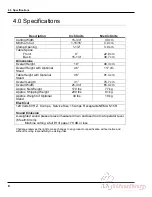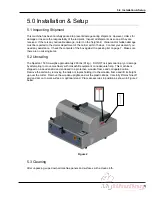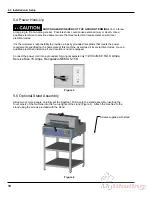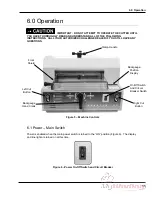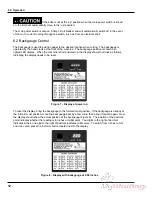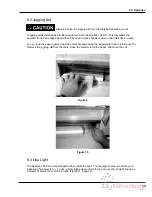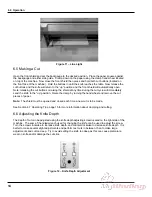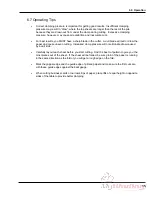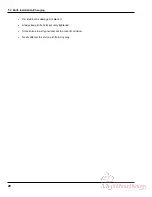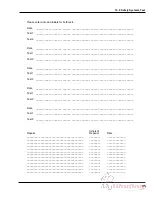
7.0 Knife Installation/Changing
17
3. Remove the two knife bolts from the slotted knife bar holes ONLY and replace with the knife lifter
assembly (Figure 14)
.
Tighten the lifters to hold the knife in place, and then remove the
remaining four knife bolts.
Figure 14
4. Clear the table surface and place the empty knife scabbard on a flat surface nearby. Remove the
scabbard’s knife retaining screws.
5. Grasp the knife lifters firmly and, at the same time, turn them counterclockwise to release the
knife from the knife bar. Lower the entire assembly down, then move the knife to the left slightly
then bring the knife out of the cutter, right end first. Put the blade in the scabbard immediately
and secure the knife with the knife retainer screws.
6. Send dull knives to a knife grinder – do not attempt to sharpen your own knives! Knives that do
not have a minimum height of 1-1/2” (3.8 cm) will not function properly and should be carefully
discarded. See the Knife Care Tips Section below for additional information.
7.2 Knife Installation
Knives are heavy and always very sharp! Be sure to keep the edge away
from your body and keep other people out of the area while handling the blade. Severe lacerations or
dismemberment could result from careless handling procedures.
1. Make sure the knife and clamp are in the “up” position. Turn the main power switch off and
disconnect the machine power cord to prevent accidental power-up while servicing the cutter.
2. Pull out the cut stick and turn it to a new surface or replace with a new one.
3. Remove the retainer screws from the new blade and screw the knife lifters into the new
blade. Screw the lifters about half way into the knife.
4. Insert the knife assembly into position under the knife bar, left end first. Raise the knife into
the knife bar slot as high as it will go. Check both view holes to make sure knife is all the way
up (Figure 15, page 18). Then tighten the lifters.
NOTE
: If the blade will not go in, make sure the lifters are not screwed into the blade too far.



